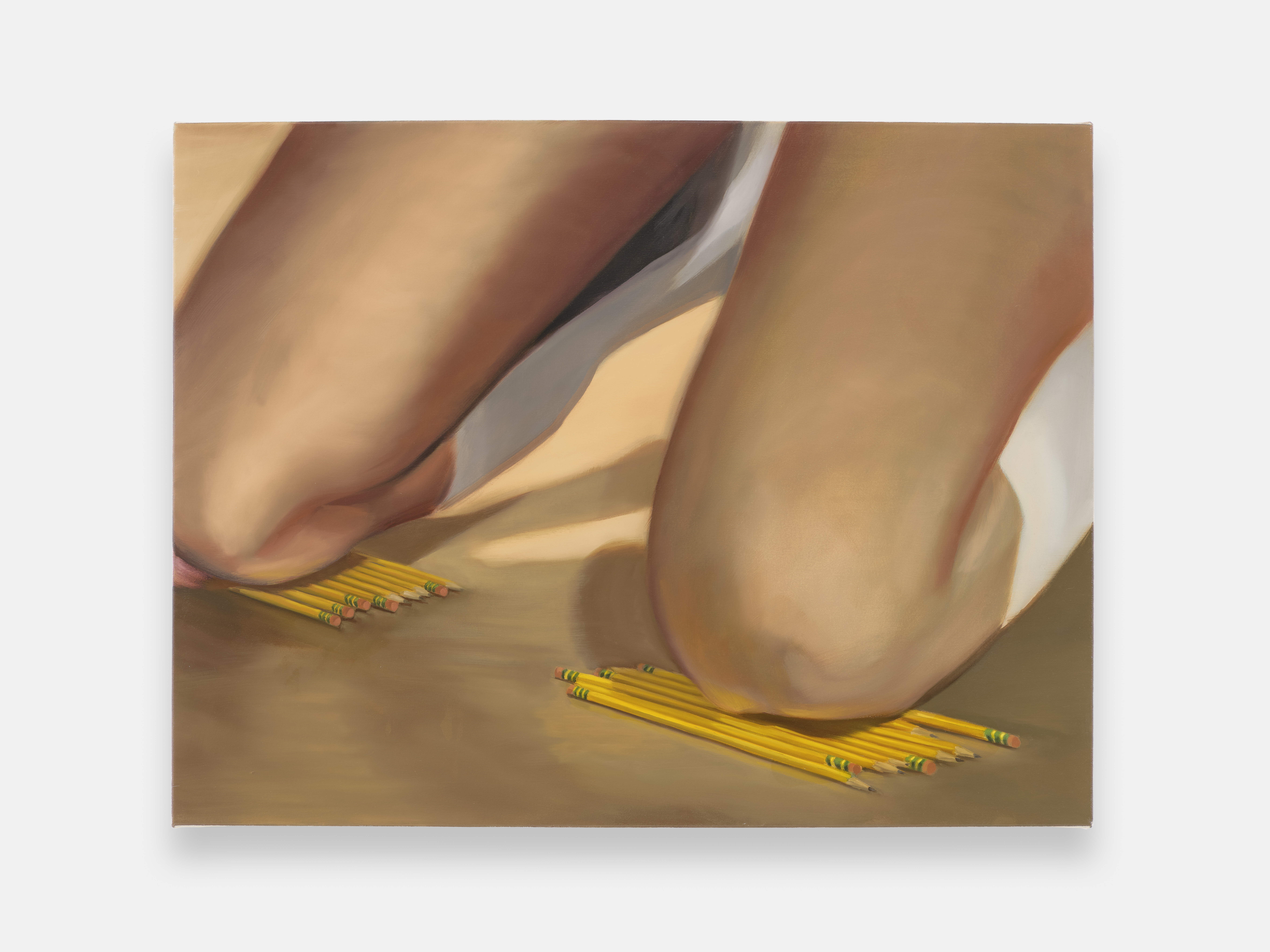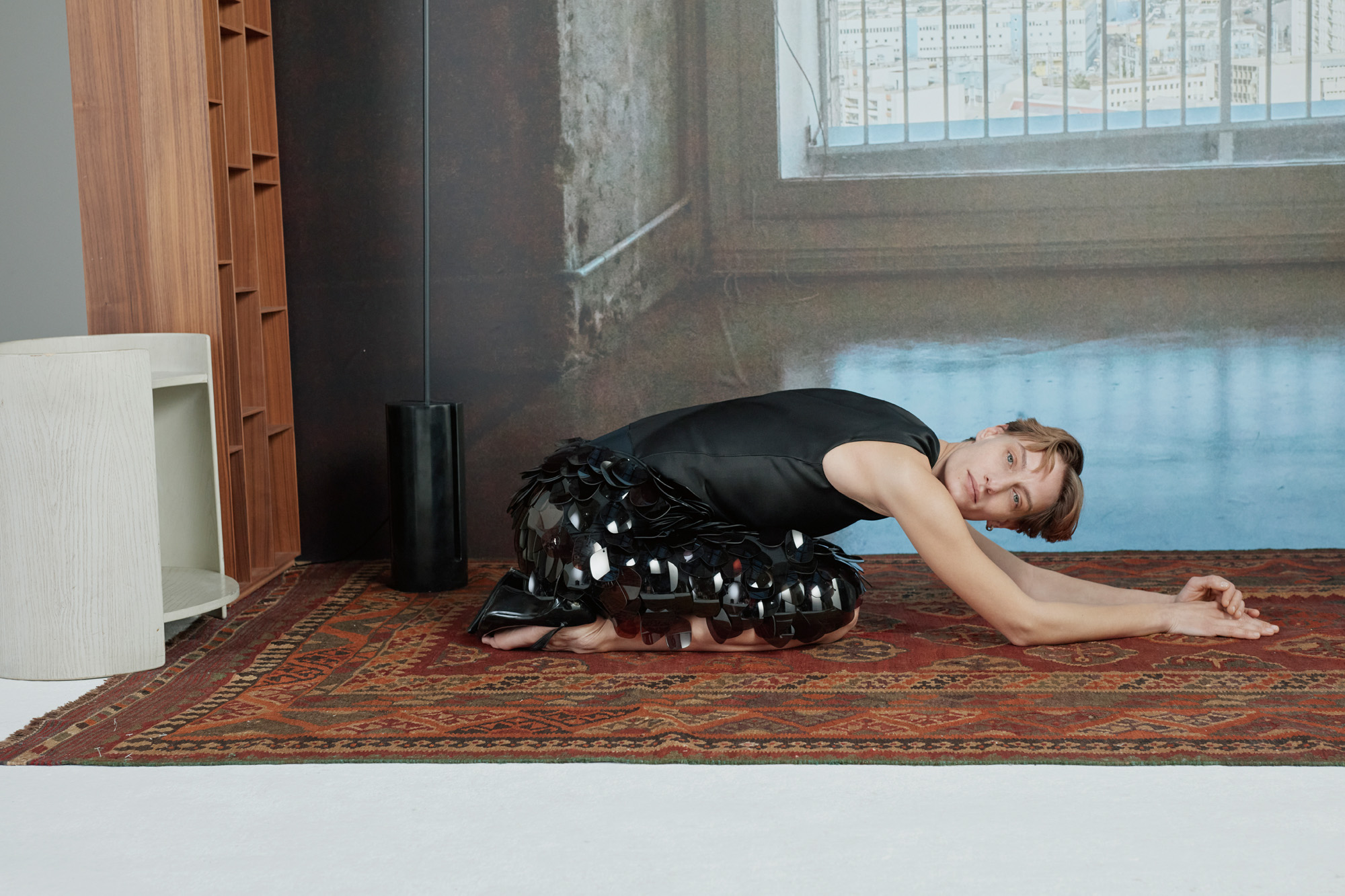Loyle Carner’s Reading Festival 2023 stage presents spatial storytelling at its finest
We talk to Loyle Carner and The Unlimited Dreams Company (UDC) about the musical artist’s stage set design for Reading Festival 2023

As Loyle Carner headlines at Reading Festival 2023, one of the UK’s biggest music events, the stage architecture of his performance invites the audience into a world inspired not only by his most recent album Hugo, but also his formative lockdown experience of taking driving lessons with his father.
In playing an event as big as Reading, yes, there is the element of spectacle in the design; but complementary to this is a sincere showcase of a personal journey that offers a side of the artist we rarely get to see.

Loyle Carner at Reading Festival 2023: the stage design
Design studio The Unlimited Dreams Company (UDC) worked on the stage setting. Co-founder Harrison Smith says: 'The set was not really technically led', but more a process of becoming invested in telling a heartfelt story. He notes that very early on, it became obvious that ‘progression and evolution’ were the driving concepts for the design of this show.
Going beyond the usual representational props, the set uses real-life objects with visceral power as a part of its composition. At polar ends of the stage, a humble street light and the actual Volkswagen 93 Mark Two that Carner learned to drive in are the kingpins of the set. The approach was purposefully minimal, and collaborative. Harrison points out they followed Carner's culinary mantra: 'If it's not necessary, it's not on the plate.'

UDC co-founder George Thomson remarks: 'There’s something very special about the fact these two men were in a very confined metal box, where they had to talk together and work through their problems.' He continues: 'For a project that is rooted in storytelling, I feel we really had to have it as part of the set.'
The performance and stage set are curated to represent the span of a 12-hour day, using the cycle of the sun to narrate acts of self-inquisition. Taking cues from Hugo, the concept helps to narrate Carner’s lived experience of grappling with manhood, race and navigating emotional journeys with his father.

Despite the stripped-back nature of the set, designing and building it all was not without challenges. Thomson remembers, 'We had to modify and adapt and play with it. It's a practical constraint of fitting it in, but there's also an aesthetic aspect of making it look right. We really didn't want smaller venues to get a worse version of the show.'
Receive our daily digest of inspiration, escapism and design stories from around the world direct to your inbox.
Wanting to create a communal experience, the usual rectangular use of floor space is done away with, instead cutting the corners to create a triangular layout for the physical platform – and therefore, a forced perspective. Thomson explains: 'The false perspective is actually carried on through light, so it also brings the audience into the set – [they are not just] looking into a window of a world.'

Alongside the performance itself, spatial elements encourage a state of empathy. In a time where we usually only see the shiny parts of people's lives, it’s refreshing to be let in on an experience that memorialises genuine moments of change, even the difficult parts. It's a spectacle that embraces authenticity, showing that all transformative moments are just as worthy to be hailed and celebrated.
Teshome Douglas-Campbell is a London-based writer, architectural designer whose work explores the intersection of design, community, and culture. With a background in socially engaged architecture, he brings a critical eye to ways we craft living environments, documenting emerging design movements and profiling transformative spaces.
-
 ‘I want to bring anxiety to the surface': Shannon Cartier Lucy on her unsettling works
‘I want to bring anxiety to the surface': Shannon Cartier Lucy on her unsettling worksIn an exhibition at Soft Opening, London, Shannon Cartier Lucy revisits childhood memories
-
 What one writer learnt in 2025 through exploring the ‘intimate, familiar’ wardrobes of ten friends
What one writer learnt in 2025 through exploring the ‘intimate, familiar’ wardrobes of ten friendsInspired by artist Sophie Calle, Colleen Kelsey’s ‘Wearing It Out’ sees the writer ask ten friends to tell the stories behind their most precious garments – from a wedding dress ordered on a whim to a pair of Prada Mary Janes
-
 Year in review: 2025’s top ten cars chosen by transport editor Jonathan Bell
Year in review: 2025’s top ten cars chosen by transport editor Jonathan BellWhat were our chosen conveyances in 2025? These ten cars impressed, either through their look and feel, style, sophistication or all-round practicality
-
 Arbour House is a north London home that lies low but punches high
Arbour House is a north London home that lies low but punches highArbour House by Andrei Saltykov is a low-lying Crouch End home with a striking roof structure that sets it apart
-
 A former agricultural building is transformed into a minimal rural home by Bindloss Dawes
A former agricultural building is transformed into a minimal rural home by Bindloss DawesZero-carbon design meets adaptive re-use in the Tractor Shed, a stripped-back house in a country village by Somerset architects Bindloss Dawes
-
 RIBA House of the Year 2025 is a ‘rare mixture of sensitivity and boldness’
RIBA House of the Year 2025 is a ‘rare mixture of sensitivity and boldness’Topping the list of seven shortlisted homes, Izat Arundell’s Hebridean self-build – named Caochan na Creige – is announced as the RIBA House of the Year 2025
-
 In addition to brutalist buildings, Alison Smithson designed some of the most creative Christmas cards we've seen
In addition to brutalist buildings, Alison Smithson designed some of the most creative Christmas cards we've seenThe architect’s collection of season’s greetings is on show at the Roca London Gallery, just in time for the holidays
-
 In South Wales, a remote coastal farmhouse flaunts its modern revamp, primed for hosting
In South Wales, a remote coastal farmhouse flaunts its modern revamp, primed for hostingA farmhouse perched on the Gower Peninsula, Delfyd Farm reveals its ground-floor refresh by architecture studio Rural Office, which created a cosy home with breathtaking views
-
 A revived public space in Aberdeen is named Scotland’s building of the year
A revived public space in Aberdeen is named Scotland’s building of the yearAberdeen's Union Terrace Gardens by Stallan-Brand Architecture + Design and LDA Design wins the 2025 Andrew Doolan Best Building in Scotland Award
-
 A refreshed 1950s apartment in East London allows for moments of discovery
A refreshed 1950s apartment in East London allows for moments of discoveryWith this 1950s apartment redesign, London-based architects Studio Naama wanted to create a residence which reflects the fun and individual nature of the clients
-
 In this Cotswolds home, drama meets minimalism
In this Cotswolds home, drama meets minimalismCotswolds home Hiaven house, with interiors designed by McLaren Excell, is a perfect blend of contemporary chic and calm, countryside drama